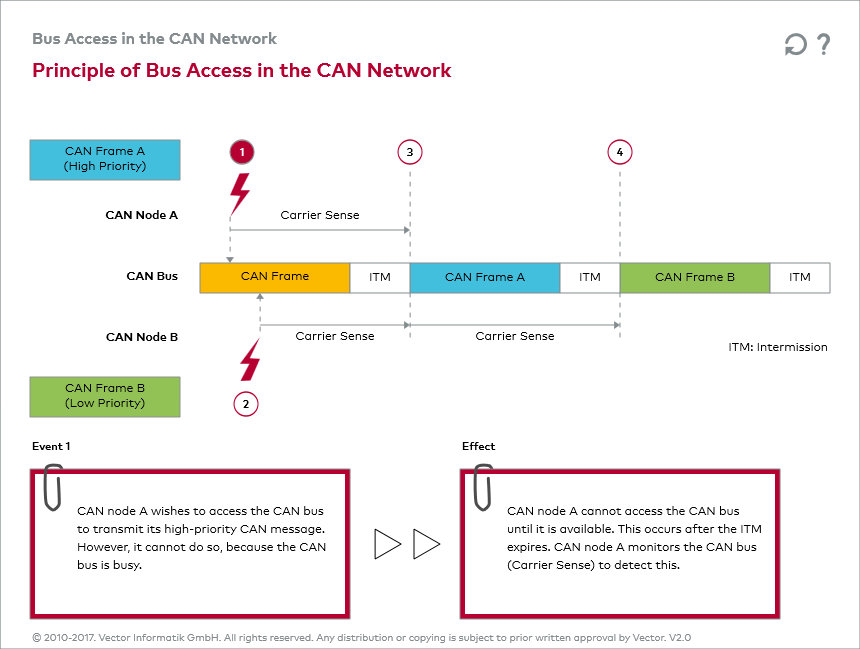- Overview
- 1. Introduction
- 2. CAN Communication
- 3. CAN Framing
- 4. CAN Bus Access
- 5. CAN Data Protection
-
6. CAN FD
- Motivation
- Advantages and Consequences
- New Types of Frames
- Details of a CAN FD Frame
- Distinguishing CAN from CAN FD Frames
- Compatibility of CAN and CAN FD Controllers
- Accelerated Transmission
- Indicating too many Errors
- Length of the Data Field
- More Data with the same Security
- Changed Rules for Bit Stuffing and CRC Calculation
Principle of Bus Access
Bus access for all nodes
ISO 11898-1 defines a multi-master architecture to assure high availability and event-driven data transmission. Each node in the CAN network has the right to access the CAN bus without requiring permission and without prior coordination with other CAN nodes. Although bus access based on an event-driven approach enables very quick reactions to events, there is the inherent risk that several CAN nodes might want to access the CAN bus at the same time, which would lead to undesirable overlaps of data on the CAN bus.
Avoid collisions
To preserve the communication system’s real-time capability, ISO 11898-1 provides for a bus access that guarantees nondestructive data transport. The so-called CSMA/CA (Carrier Sense Multiple Access with Collision Avoidance) method is used here. The CSMA/CA method ensures that CAN nodes wishing to send do not access the CAN bus until it is available.
Bitwise bus arbitration
In case of simultaneous bus access, the CSMA/CA method based on bitwise bus arbitration ensures that the highest priority CAN message among the CAN nodes prevails. In principle, the higher the priority of a CAN message the sooner it can be transmitted on the CAN bus. In case of poor system design, low priority CAN messages even run the risk of never being transmitted.
The interactive figure “Principle of Bus Access” is provided to give you a better understanding. It assumes a scenario of two CAN nodes wanting to access the bus during an ongoing message transmission. Please read the instructions so that you can fully utilize the entire functionality of the media object.

